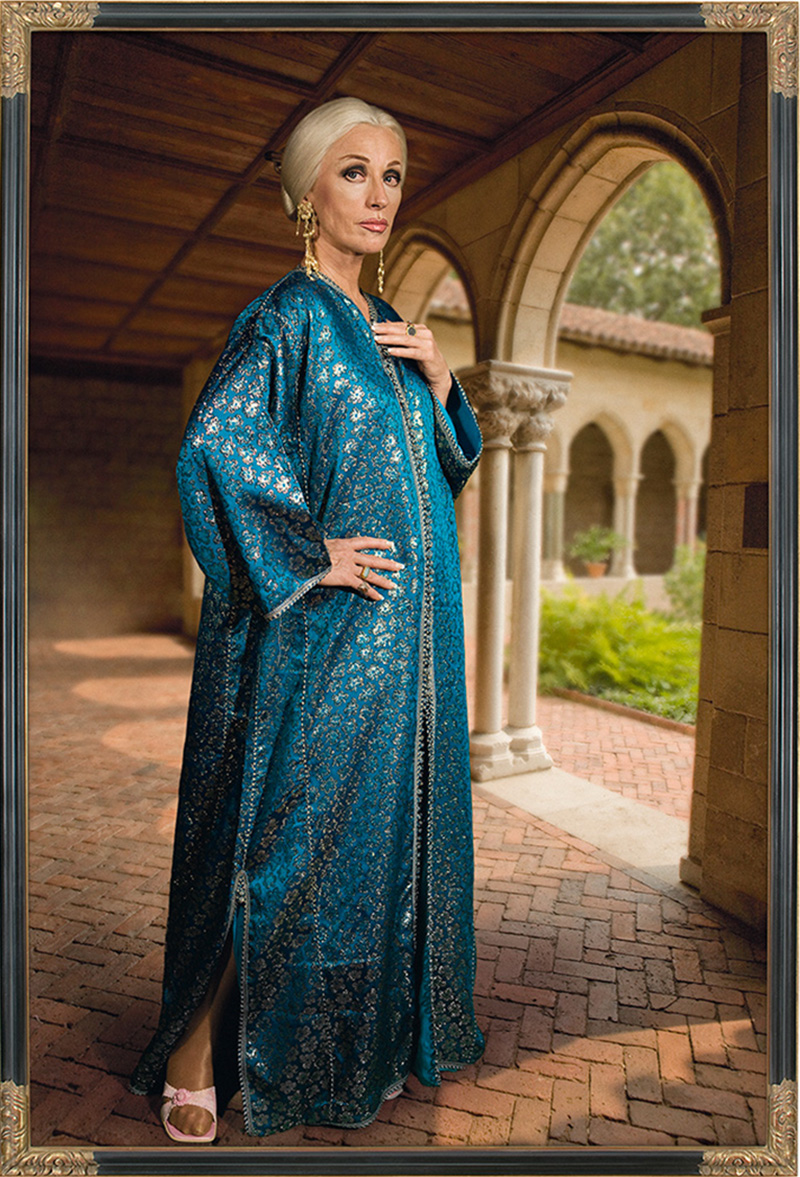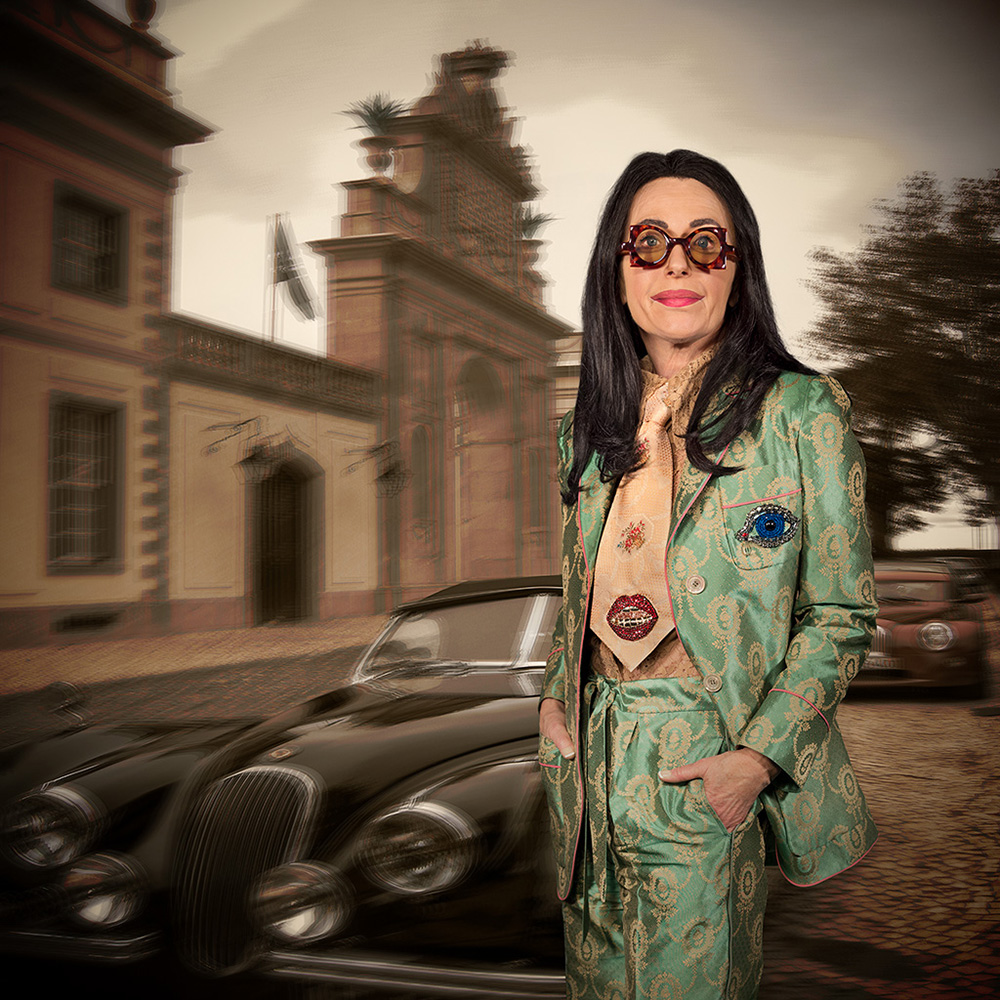The new Cindy Sherman show at the Vancouver Art Gallery is impressive. Some 170 works span the length of Sherman’s career from her humble art school days to her current super-duper stardom.
Of all the various incarnations that Sherman has embodied throughout her career (porno hag, spooky clown, rich-bitch society maven), it was one of her earliest works (Untitled #479) that snagged my eye at the opening of the show. As the curator from London’s National Portrait Gallery, who helped organize the VAG exhibit, explained, it is the only work in the show that actively documents Sherman’s transformation process.
In a series of photos, the artist morphs from an ordinary looking student — oversize glasses, shag haircut — into a powder puff siren, complete with Cupid’s bow, spit curls and rouged cheeks. A face full of slap, as they say. Like much of Sherman’s work, the effect is a bit eerie, a little sexy and oddly disturbing, all at the same time.
As the Guardian noted of the Sherman exhibition during its initial run at the National Portrait Gallery: “This show is a masterclass in makeup, quite apart from anything else. You can see some of her methods in an early reverse striptease, as it were, in which Sherman turns herself from spectacled geek all the way through to glamour model — with a single clear Cindy, perhaps, among the sequential stages. And staging is, of course, the point.”
Long before she entered the stratosphere of the contemporary art world, Sherman made her reputation on her ability to create fully realized, richly embodied characters with only thrift store clothing and a whole lot of makeup. The apocryphal story is that she found her métier early in life by imitating her grandmother, complete with saggy sock boobs and a stoop.
As the National Portrait Gallery curator noted in her introduction, makeup isn’t used to hide in Sherman’s work as much as it is to create. In this way, it is generative, built up in layers and carefully articulated detail to bring forth the sense of a real personality, a woman breaking the frame and coming towards you.
Sometimes the effect is subtle — a teenage girl waiting by the phone, her cheeks pink with colour, and other times it’s deeply horrific. An older woman, her mouth ringed round with the reddest lipstick fashioned into a bloody maw.
In an early interview, Sherman talked about the sense of play and power inherent in making herself up. “I’ve always played with makeup to transform myself, but everything, including the lighting, was self-taught. I just learned things as I needed to use them. I absorbed my ideas for the women in these photos from every cultural source that I’ve ever had access to, including film, TV, advertisements, magazines, as well as any adult role models from my youth.”
The Untitled Film Stills that launched Sherman’s career are still fascinating, but her portraits of older women in full-frontal face are among the more intriguing works in the VAG show.
In an interview with the Guardian, she cites Eve Arnold’s famous photos of an aging Joan Crawford as a reference, but Sherman’s works go deeper. Almost too deep sometimes. There is a disorientating mixture of kindness and cruelty in many of her images, so intermingled that you don’t know whether to laugh, cry or recoil in horror.
Her images are also a piercing reminder of the currency of beauty and the bizarre things that women do to hold onto its power. Makeup is sometimes the most benign of these stratagems. There’s Botox, surgical interventions and starvation-style diets, all of which pop up like a sock to the jaw in her series of portraits from 2008, often described as “the society women.”

In oversized gilt frames, each persona confronts onlookers from beneath a carapace of shellacked hair and makeup. Behind the kabuki masks of foundation, heavy eyeshadow and hard-edged lipliner, the eyes of these different women peek out as if through jungle foliage. One-part camouflage to two-parts war paint, defence and offence mechanisms link together.
It’s sad, brave, lonely, horrifying — a welter of different things that you have to pick apart from the small details on offer. A slash of eyeliner here, a dangling thread there, and the most terrible shade of lipstick imaginable (as seen in Untitled #474).
It is these strange imperfections that disrupt any consistent reading. One moment, you’re kind of grossed out and the next, strangely impressed with the sheer ballsy bravado of these figures. “Who are these women?” one wants to know.
As Sherman herself is aging, her photographs have taken on even greater poignancy. As she told the Guardian, she doesn’t need to fake wrinkles anymore, the real deal are already there and well-inscribed.
In her more recent work, Sherman has harkened back to screen sirens, and again makeup was a starting point, as she indicated in an interview with Women’s Wear Daily: “I just wanted to go back to using a lot of makeup again. The makeup was so extreme — the very arched eyebrows or very thin eyebrows, very thick, sometimes black eyes, or the little bow-shaped lips. I just liked the sort of eccentric look of that time.”
Unlike other photographers from this era (Horst’s movie star portraits come to mind), there is always something not quite right. It is the imperfections, the thing that pokes and scratches and allows fragile, faulty humanity to enter in like an air bubble. It allows these images to breathe.
In many of Sherman’s photographs, makeup is a full-frontal challenge, meant to stand off the predations of age and failing miserably, pitiable but defiant, obvious and in a weird way, brave. It reminded me of all women from a certain age who, on the downhill slope of life, are still putting on their face in the face of life’s challenges.
My grandmother, a devotee of Avon, spent a good portion of every morning doing her hair and makeup. As a child, I spent a good deal of time simply watching her. The ritual of it was mesmerizing — a slather of perfumed cold cream, orangey foundation, curlers and bobby pins and finally a slick of coral lipstick. All of this on a farm, 30 miles from the nearest town, where no one except her immediate family ever saw her.
Still, this dedication to the acts and rights of beauty was foundational and important. If I close my eyes and think of her, I can still smell the cold cream on her face.
A similar sense memory occurred in the Cindy Sherman show, with whiffs of beauty and sadness coming out of the frame and in my heart. ![]()
Read more: Media
















Tyee Commenting Guidelines
Comments that violate guidelines risk being deleted, and violations may result in a temporary or permanent user ban. Maintain the spirit of good conversation to stay in the discussion.
*Please note The Tyee is not a forum for spreading misinformation about COVID-19, denying its existence or minimizing its risk to public health.
Do:
Do not: